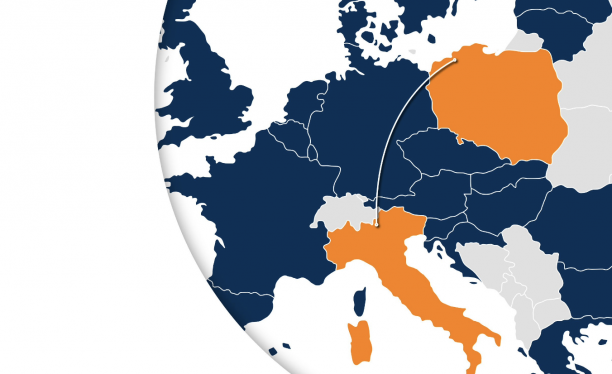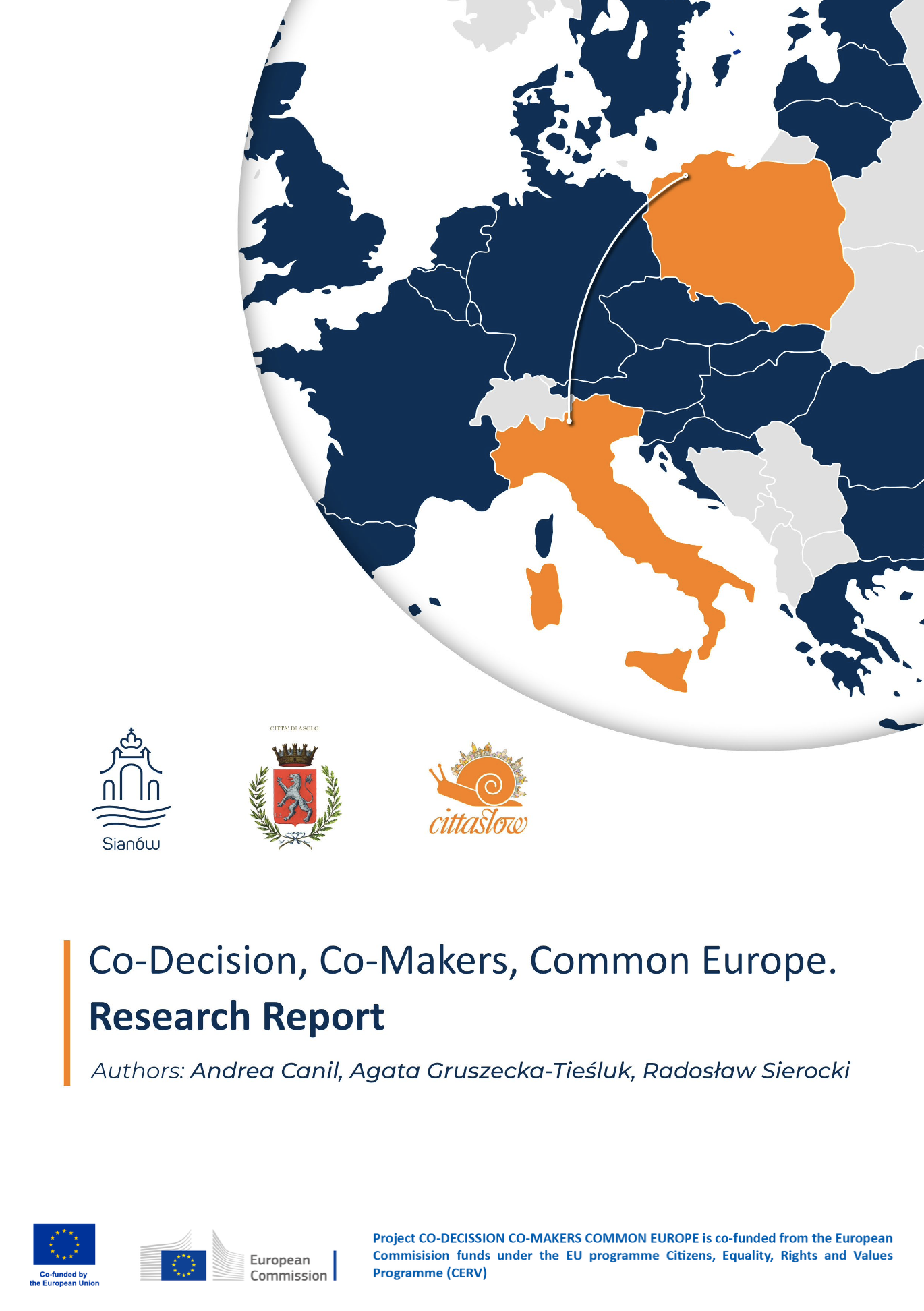May
Co-Decision, Co-Makers Pro, Common Europe - Report

The "Co-DE Co-ME COMMON EUROPE" project carried out by two cities of Cittaslow (Sianów PL and Asolo IT) within the EU CERV program (Citizens, Equality, Rights and Values) ended today. As a result of the project activities, an interesting report was produced summarizing the research carried out in the above-mentioned cities in the area of residents' activity and social participation.
We invite you to check the information contained in the report, which clearly shows the level of involvement of the inhabitants of small towns and of the most active groups.
The Project
What does social engagement look like in small towns in Poland and Italy? Who is most frequently involved? Whose initiative are the projects implemented under? In which areas? We sought answers to these and other questions by conducting a study as part of the Co- Decision, Co-Makers, Common Europe project funded by European funds. The project partners were two cities: Sianów in Poland and Asolo in Italy.
The aim of the conducted research was to identify "good practices" in the field of social engagement and civic participation in Polish and Italian cities belonging to the International Cittaslow Towns Network. Within the study, we examined both more formal examples of activities (participatory budgets, citizen consultations, Youth Councils, Senior Clubs, NGOs, regular local events, volunteering, etc.) as well as less formal ones (neighborly assistance, picnics, etc.). We looked for initiatives initiated by local authorities, as well as those that arose from the ideas of the city or municipality residents. Local leaders, who completed a survey prepared by the project team (experts from various backgrounds), were involved in the study.
The first part of the research was quantitative in nature and focused on social engagement in Cittaslow towns in Poland and Italy. The survey was conducted through an online questionnaire. The second part involved describing selected civic initiatives that illustrate the results of the quantitative study.
According to the assumptions, the survey was to be conducted in 60 cities (30 in Poland and 30 in Italy) and was targeted at residents, local leaders, non-governmental organizations, and representatives of local government authorities. It was anticipated that approximately 150- 200 people would complete the survey.
Despite many attempts to reach respondents from different cities, 223 responses were collected from 35 Polish cities (164 surveys, with the highest number from Sianów, Nowe Miasto Lubawskie, and Olecko) and 19 Italian cities (59 surveys, with the highest number from Asolo, Pineto, and Santarcangelo di Romagna). It should be emphasized that the presented research results are exploratory in nature, and we cannot generalize them to other cities. They contribute to further research on social activity in small towns in Poland and Italy. Below are the main conclusions from this study.
Survey results
Traditional, clean, artistic - what do the respondents think about their cities?
Both respondents from Polish and Italian cities believe that the adjective that best describes their city is "small" (79% and 75% respectively). The characteristics of the cities can be divided into three segments - since respondents could indicate up to five traits, their collective responses can be grouped by combining the ones that were most frequently selected. In the case of Italian cities, those who chose the answer "small" also usually selected the traits: clean, sustainable, and artistic (Figure 1). In the case of Polish cities, "small" was associated with: traditional, quiet, and clean (Figure 2). Both in Polish and Italian cities, positive responses dominate and fall into the first and second groups, while negative responses are less common and also form a separate group. The biggest differences between Italian and Polish cities are related to their perception as artistic - 54% (IT) and 25% (PL), sustainable - 51% (IT) and 26% (PL), and quiet - 25% (IT) and 49% (PL).
